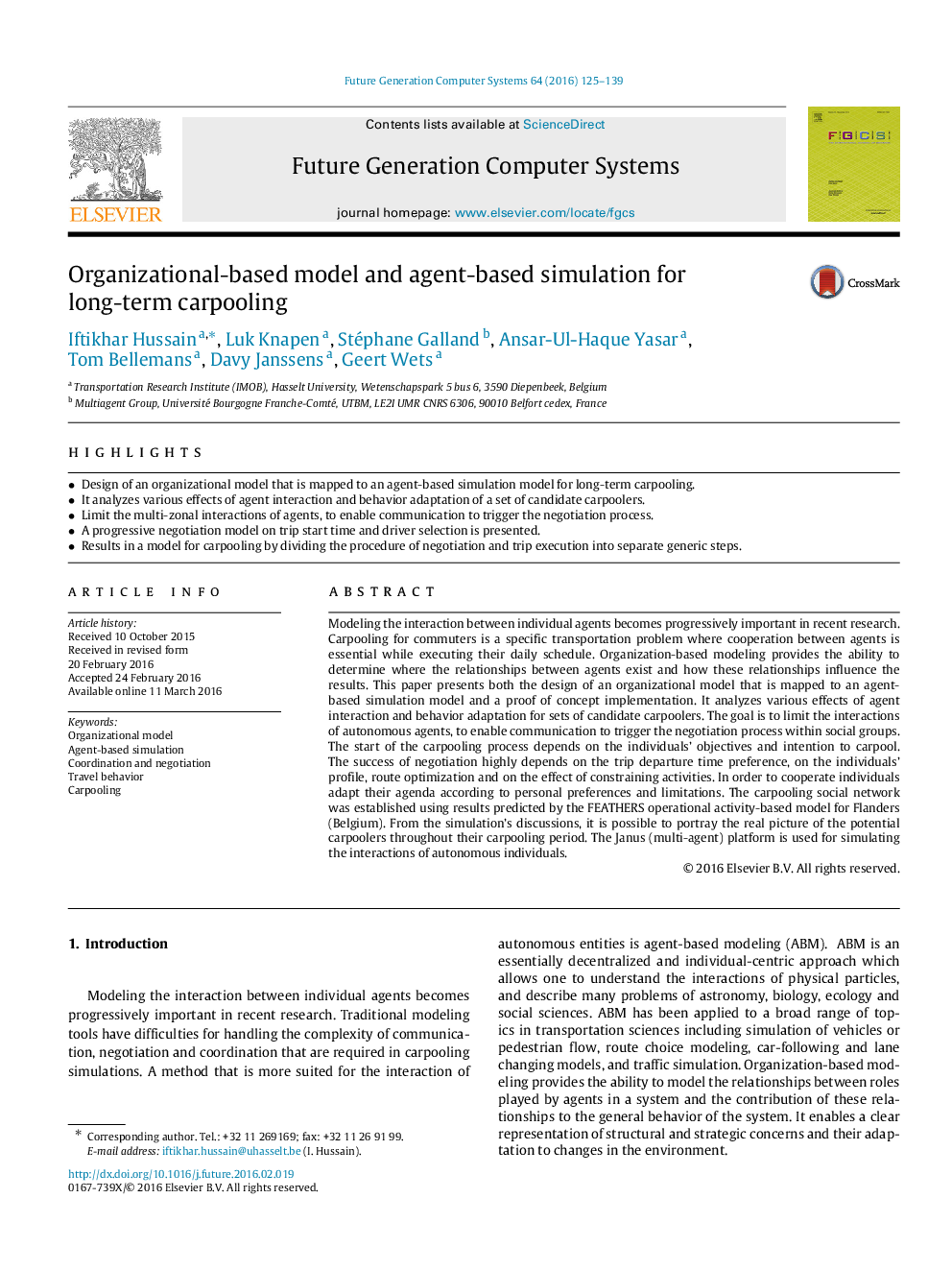| کد مقاله | کد نشریه | سال انتشار | مقاله انگلیسی | نسخه تمام متن |
|---|---|---|---|---|
| 424790 | 685642 | 2016 | 15 صفحه PDF | دانلود رایگان |
• Design of an organizational model that is mapped to an agent-based simulation model for long-term carpooling.
• It analyzes various effects of agent interaction and behavior adaptation of a set of candidate carpoolers.
• Limit the multi-zonal interactions of agents, to enable communication to trigger the negotiation process.
• A progressive negotiation model on trip start time and driver selection is presented.
• Results in a model for carpooling by dividing the procedure of negotiation and trip execution into separate generic steps.
Modeling the interaction between individual agents becomes progressively important in recent research. Carpooling for commuters is a specific transportation problem where cooperation between agents is essential while executing their daily schedule. Organization-based modeling provides the ability to determine where the relationships between agents exist and how these relationships influence the results. This paper presents both the design of an organizational model that is mapped to an agent-based simulation model and a proof of concept implementation. It analyzes various effects of agent interaction and behavior adaptation for sets of candidate carpoolers. The goal is to limit the interactions of autonomous agents, to enable communication to trigger the negotiation process within social groups. The start of the carpooling process depends on the individuals’ objectives and intention to carpool. The success of negotiation highly depends on the trip departure time preference, on the individuals’ profile, route optimization and on the effect of constraining activities. In order to cooperate individuals adapt their agenda according to personal preferences and limitations. The carpooling social network was established using results predicted by the FEATHERS operational activity-based model for Flanders (Belgium). From the simulation’s discussions, it is possible to portray the real picture of the potential carpoolers throughout their carpooling period. The Janus (multi-agent) platform is used for simulating the interactions of autonomous individuals.
Journal: Future Generation Computer Systems - Volume 64, November 2016, Pages 125–139
